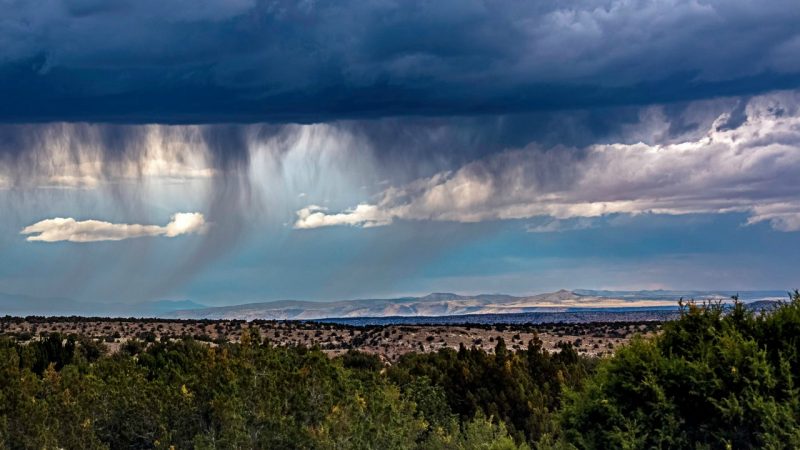Virga
Source: Wikipedia
In meteorology, a virga, also called a dry storm, is an observable streak or shaft of precipitation falling from a cloud that evaporates or sublimates before reaching the ground. A shaft of precipitation that does not evaporate before reaching the ground is a precipitation shaft. At high altitudes the precipitation falls mainly as ice crystals before melting and finally evaporating; this is often due to compressional heating, because the air pressure increases closer to the ground. It is very common in deserts and temperate climates. In North America, it is commonly seen in the Western United States and the Canadian Prairies.
Virgae can cause varying weather effects, because as rain is changed from liquid to vapor form, it removes significant amounts of heat from the air due to water's high heat of vaporization. Precipitation falling into these cooling downdrafts may eventually reach the ground. In some instances these pockets of colder air can descend rapidly, creating a wet or dry microburst which can be extremely hazardous to aviation. Conversely, precipitation evaporating at high altitude can compressionally heat as it falls, and result in a gusty downburst which may substantially and rapidly warm the surface temperature. This fairly rare phenomenon, a heat burst, also tends to be of exceedingly dry air.
Below is an image of a virga near Albuquerque, NM.





